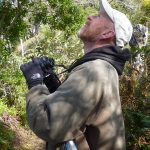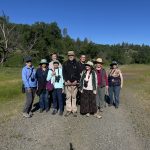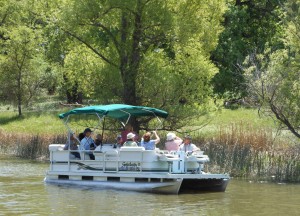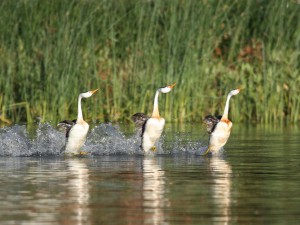Redbud Audubon presents monthly programs every third Thursday from September through April. The programs feature interesting guest speakers on a variety of birding and nature topics. Meetings start at 7 p.m. and are currently held on ZOOM. The public is warmly invited to all Redbud programs.
~~~~~~~~~~~~~~~~~~~~~~~~~~~~~~~~~~~~~~~~~~~~~~~
2022-2023 Program Topics
Date Topic
Sept 15 Raptor Migration over the Marin Headlands
Oct 20 Birds and the Mendocino Coast Food Web
Nov 17 Double-Crested Cormorants Nesting on the Oakland-Bay Bridge
Dec 15 Bird ID for Christmas Bird Count
Jan 19 Barred Owls threat to Spotted Owls
Feb 16 Waterfowl Identification
Mar 16 Deep Dive into the American Dipper
Apr 20 Heron and Egret Bay Area Research
May 18 Annual Picnic (To be announced in May newsletter
~~~~~~~~~~~~~~~~~~~~~~~~~~~~~~~~~
May Meeting – Thursday, May 18, 5:30 pm
-
-
-
-
- End of year potluck picnic and installation of officers
- Lakeside County Park on Park Drive off of Soda Bay Road
-
-
-
Annual Redbud End-of-Year Picnic and Officers’ Installation
Redbud Audubon Society members are looking forward to the group’s first annual picnic since May 2019. That was the last picnic to be held before the Covid isolation period that started in March 2020.
Please join us for this low-key event. All Redbud Audubon Society members and friends are welcome to attend, starting at 5:30 p.m. We will also be installing officers, including new president Donna Mackiewicz, a Clearlake Oaks resident.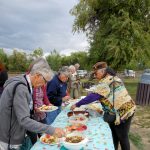
The event will be held at Lakeside County Park on Park Drive off of Soda Bay Road. The picnic is a potluck, but Audubon supplies hotdogs, buns and condiments. You are welcome to bring alternate meat or meat-substitute to grill if you prefer. Sodas and water will also be provided. Participants are encouraged to bring salad, beans, chips, or dessert to share. Plan to arrive at 5:30 p.m. Look for us down by the lake at the picnic tables to the left of the launch ramp. The picnic is always a nice way to visit with and get to know chapter members, so please join us.
~~~~~~~~~~~~~~~~~~~~~~~~~~~~~~~~~~~~~~~~~`
Thursday April 20, 2023, 7:00 p.m.
Audubon Canyon Ranch
30 Years of Research on
Heron and Egret Colonies
to Guide Wetland Conservation
On Thursday April 20, Redbud Audubon will host Scott Jennings, an Avian Ecologist 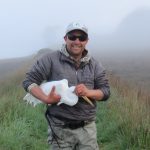 with the Audubon Canyon Ranch in Marin County. The program will be presented on Zoom starting at 7 p.m.
with the Audubon Canyon Ranch in Marin County. The program will be presented on Zoom starting at 7 p.m.
Since 1990, Audubon Canyon Ranch has had a program monitoring heron and egret nesting colonies throughout the northern part of the San Francisco Bay area. During that time, the researchers have observed several colonies change in size or be abandoned, and have seen new colonies form.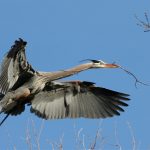
In recent years they have used GPS telemetry to study how Great Egrets move across the landscape, in part to learn how far individual egrets might move when they abandon a nesting colony. Scott Jennings will talk about how nesting abundance of Great Blue Herons, Great Egrets, Snowy Egrets, and Black-crowned Night-Herons has changed over the last 30 years, and how that information can be used to guide wetland conservation.
He will also share what they have learned about how frequently heron and egret colonies change size or are abandoned, factors thought to be related to colony abandonment, and how often birds return to abandoned colonies.
Scott Jennings is an Avian Ecologist for Audubon Canyon Ranch. He grew up in Mendocino and Humboldt Counties and earned a BA degree in Environmental Studies and Biology at UC Santa Cruz and a MS degree in Wildlife Science at Oregon State University.
Over the last 17 years he has studied the ecology and nesting behavior of everything from Wrentits to Spotted Owls to Adelie Penguins.
Outside of work he spends most of his free time surfing, hiking, backpacking, travelling, hunting and fishing. He lives outside Petaluma with his wife, two dogs, two horses, four sheep, a dozen or so chickens, and a weedy vegetable garden.
Please register for the meeting by clicking on the registration link. After you register, the Zoom link for the program will be sent on the day of the presentation.
~~~~~~~~~~~~~~~~~~~~~~~~~~~~~~~~~
Thursday March 16, 2023 7:00 p.m.
Taking a Deep Dip: The Lives of North America’s Only Aquatic Songbird
on ZOOM with Kate Marianchild
ZOOM REGISTRATION LINK 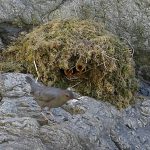
Redbud Audubon will be presenting a fascinating program on Thursday, March 16, starting at 7 p.m. on Zoom with Kate Marianchild.
How many North American songbirds dive fearlessly into raging rapids? How many build large domeshaped nests of moss and flash bright-white eyelids from their dark interiors? How many forage for food on the bottoms of freezingcold streams? Answer: Only one—the American dipper, Cinclus mexicanus (aka “water ouzel”).
Acting on a tip from a friend, Kate Marianchild spent several afternoons during the summer of 2020 searching the upper reaches of the Russian River for a dipper nest. After she finally found a large mossy dome on a boulder ledge over thundering whitewater, she began observing, photographing, and videoing the nesting behaviors of American dippers, returning several times over the season.
The following two summers she documented another nest on a boulder several hundred yards downstream from the first. During her talk about this extraordinary species, Kate will show videos and photographs of dippers feeding their babies; flashing their semaphore-like eyes; singing exuberantly; dipping (bobbing up and down), foraging, and building a nest. She will also share sightings of other species she and her friends saw along the river, including an American mink, as well as borrowed underwater images of dippers doing what they are most famous for: foraging for food on river bottoms.
Please join me for a deep dip into the lives of the unique, fascinating, and endearing American dipper. This talk, which is based on Marianchild’s photos and videos of these birds and their nests over the past three breeding seasons, will also include an overview of the world’s four other dipper species.
Please register for the meeting by clicking on this registration link.
~~~~~~~~~~~~~~~~~~~~~~~~~~~~~~~~~~~~~~~~~~~~~~~
Learn How to Identify Similar Waterfowl
Presented by Mike Carion, retired Chief of Law Enforcement for the California Department of Fish and Wildlife
Thursday, February 16, 7:00 pm
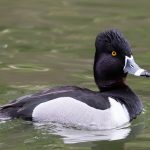
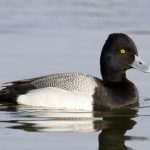 Have you ever had trouble identifying a duck flying overhead at your favorite lake or river? Can you ID flocks of birds as you scan an open waterway at the Sacramento Wildlife Refuge? If you’d like to learn more about identification of our local waterfowl, you won’t want to miss this month’s Redbud Audubon Zoom program on Thursday, February 16 at 7 p.m.
Have you ever had trouble identifying a duck flying overhead at your favorite lake or river? Can you ID flocks of birds as you scan an open waterway at the Sacramento Wildlife Refuge? If you’d like to learn more about identification of our local waterfowl, you won’t want to miss this month’s Redbud Audubon Zoom program on Thursday, February 16 at 7 p.m.
The speaker is Mike Carion, a retired Chief of Law Enforcement for the California Department of Fish and Wildlife and a former board member of Wintu Audubon chapter in Redding.
Mike’s presentation will cover how to identify the species of ducks and geese most likely to be found in Lake County and at the Central Valley NWR’s. He will discuss helpful identifying characteristics of these waterfowl to narrow down the possibilities that birders encounter in the field. Even experienced birders will learn something new from Mike’s talk.
Mike received his degree in Wildlife Management from Humboldt State and spent 32 years as a game warden at various ranks, training all the wardens in many areas including waterfowl enforcement.
He retired in 2014, then assisted Hawaii Department of Wildlife in the development of a training academy for wardens and began working for Ducks Unlimited until July 2020, when he officially retired again and moved to Hawaii with his wife Nicole and started an Audubon group there.
~~~~~~~~~~~~~~~~~~~~~~~~~~~~~~~~~~~~~~~~
Status of Spotted Owls in NW California and the Impact of the Barred Owl
Presented by Colorado State University researcher, Peter Carlson
Thursday, January 19, 7:00
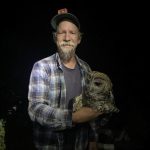 On Thursday, Jan. 19 Redbud Audubon will present a Zoom program featuring Barred Owl populations of the Northwest. Colorado State University researcher, Peter Carlson, will present the program which starts at 7 p.m. To register for the program, click on the registration link above. The link for the program will be sent on the day of the presentation.
On Thursday, Jan. 19 Redbud Audubon will present a Zoom program featuring Barred Owl populations of the Northwest. Colorado State University researcher, Peter Carlson, will present the program which starts at 7 p.m. To register for the program, click on the registration link above. The link for the program will be sent on the day of the presentation.
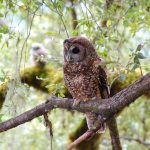
Spotted Owl
Barred owl populations have been increasing in the Pacific northwest for several decades and are now impacting Northern Spotted Owls throughout their range. To address this problem, several Barred Owl removal studies have been initiated. These studies have included areas of local long-term demographic studies on Green Diamond property, the Hoopa Reservation, and the Six Rivers and Shasta-Trinity National Forests.
Peter Carlson, currently working for Colorado State University as a long-time member of the research team for the studies on national forest lands, will discuss some of the impacts of Barred Owls, the recent trends of the owls, and status of the removal studies. While the impacts of barred owls are of real concern, that is only one of several ongoing threats to the Spotted Owl. Carlson will also discuss the barred owl issue in the context of multiple stressors.
Carlson began studying spotted owls in the San Bernardino mountains in 1992 and has worked on the NW California demography study since 1994. He worked briefly with Barred Owls and other raptors, in their native habitat, in Illinois in 1986 prior to beginning his MS work in Wildlife Ecology at the University of Florida.
He previously worked for Humboldt State University as the field coordinator for the demography study, and since 2005 has worked through Colorado State University as a Research Associate for the study. He lives in Arcata CA.
~~~~~~~~~~~~~~~~~~~~~~~~~~~~~~~~~~~~
Bird Identification presented by Donna Mackiewicz
Thursday, December 15, 7:00 p.m.
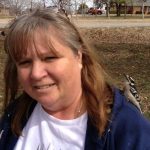
The Redbud Audubon Society will present a comprehensive Bird Identification program on Thursday Dec. 15, starting at 7 p.m. The program will be presented on Zoom by Donna Mackiewicz who is an avid birder and naturalist. The program is in preparation for Redbud’s 48th annual Christmas Bird Count (CBC)
Donna spends her days either viewing birds at her Clearlake Oaks Keys residence or visiting the many prime birding spots in Lake County.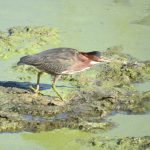
The program will consist of extensive images with discussion centering on distinguishing features of birds that are often seen in Lake County and expect to be seen during Redbud’s annual Christmas Bird Count that is scheduled for Saturday, Dec. 17.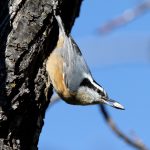
~~~~~~~~~~~~~~~~~~~~~~~~~~~~~~~~~~~~
Scientists Marc Rauzon and Meredith Elliott to discuss:
Cormorants’ use of urban structures for nesting
Thursday, November 17, 7:00 p.m.
Get ready for a truly fascinating program about Double-crested Cormorants featured for the Redbud Audubon Society’s Thursday, Nov. 17, Zoom program starting at 7 p.m.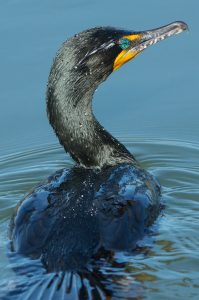
Double-crested Cormorants (Phalacrocorax auritus) are seabirds known to use urban structures as nesting habitat. The old east span of the San Francisco-Oakland Bay Bridge and the eastern portion of the Richmond-San Rafael Bridge have hosted the two largest colonies of this species in the region.
Scientists Marc Rauzon and Meredith Elliott, who have studied these birds for three decades, will discuss their research which, among other things, shows the population dynamics of this resilient species. Viewers will also learn about their efforts to study the Bay Area population of this adaptable, yet maligned, bird.
Rauzon was with the US Fish and Wildlife Service, where he studied sea birds and endangered marine mammals in Hawaii, Alaska, and California. He is also an expert on the effects of invasive animals and plants on tropical islands. His latest book Isles of Amnesia (available on Amazon) details his experiences. Rauzon is also a research associate with Point Blue and a Geography professor at Laney College in Oakland.
Elliott is a Senior Scientist at Point Blue Conservation Science and has worked on a variety of seabird monitoring and diet projects. She supervises the Point Blue marine laboratory where data on marine food webs are collected. She is a program leader with the ACCESS Program (www.accessoceans.org), an at-sea monitoring program founded by Point Blue, Greater Farallones National Marine Sanctuary, and Cordell Bank National Marine Sanctuary.
~~~~~~~~~~~~~
Hydrologist Tim Bray presents
Birds and the Importance of the
Mendocino Coastal Waters Food Web
Thursday, October 20 via ZOOM
The Redbud Audubon Society is pleased to host Tim Bray on Thursday, Oct. 20 for its monthly Zoom presentation, starting at 7 p.m. Bray is the President of the Mendocino Coast Audubon Society is a retired Hydrogeologist with extensive knowledge of his topic.
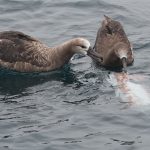
“Wind-driven upwelling along the California coastal shore drives an extraordinarily productive marine ecosystem, attracting many kinds of birds,” Wray explains. “By contrast, offshore marine conditions are far less productive and support a less diverse group of birds, many of which are seldom seen from shore.”
These two different ecologies are juxtaposed off the Mendocino coast, providing the opportunity to see a wide variety of seabirds employing different feeding strategies.
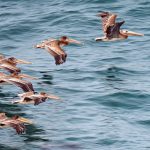
This presentation begins with a review of the mechanics and biology of the nearshore and offshore ecosystems, before looking at some of the birds that rely on different parts of the marine food webs and the remarkable adaptations they display.
Bray cohosts a monthly radio program on Mendocino County’s KZYX public radio station (The Ecology Hour) with Dr. Robert Spies, a marine biologist. An avid birder, he goes to sea as often as possible and organizes occasional pelagic field trips.
~~~~~~~~~~~~~~~~~~~
Allen Fish presents
Raptor Migration over the Marin Headlands
Thursday September 15 at 7 p.m.
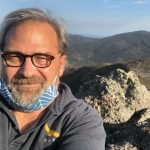
The Redbud Audubon Society will host raptor expert, Allen Fish, on Sept. 15 at 7 p.m. through a Zoom program. Pre-registration is required and can be accomplished by clicking on the Zoom link.
Fish is a bird biologist, writer, teacher, and community science expert who has been the Golden Gate Raptor Observatory (GGRO) director since 1985. The GGRO is a program of the Golden Gate National Parks Conservancy in cooperation with the National Parks Service which operates the Golden Gate National Recreation Area, located throughout parts of San Francisco and includes Hawk Hill on the Marin Headlands.
From August through December each year a great number of hawks, kites, eagles, falcons, osprey, vultures and harriers pass through the Marin Headlands on their autumn migration. This spectacular visible flight has been monitored and tracked by National Park Service volunteers since the early 1980s, under the auspices of the GGRO.
Join director, Allen Fish for a “deep dive,” into what GGRO and colleagues have learned over four decades of counting, banding and tracking birds of prey. Fish will attempt to answer questions like – “what raptor species have the most increasing population trends?” And: “what species are GGRO most concerned about?”
The biologist will talk about the weirdest raptor that has been seen at Hawk Hill, and what Merlins eat on migration, and do we know? The impact on climate change on the Pacific Raptor Flyway will also be addressed as well as the greatest threats to California birds of prey.
Allen Fish taught Raptor Biology at UC Davis in the 2000s and in 2022 was named to the Honorary Scholar Hall of Fame by the Biology Department at Sonoma state University. He lives in Berkeley with frequent migrations to the Marin Headlands and to Donner Pass.

